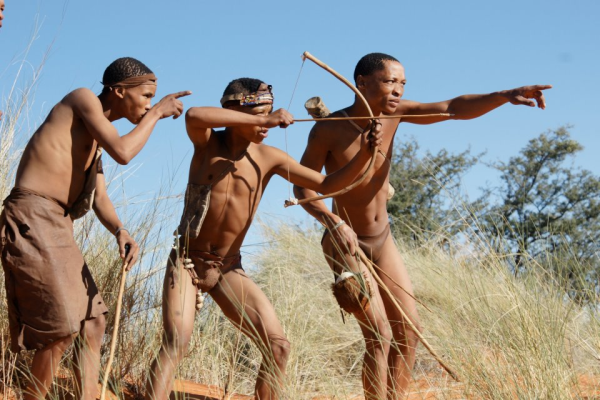Khoisan
Khoisan is a name often given to the non–BANTU-speaking peoples of southern Africa formerly called Bushmen (or San) and Kxoe (or Khoi). The Khoisan do not have a common culture or ethnic background. Instead they share a unique family of languages, which features the use of “clicks.” Khoisan peoples have inhabited southern Africa for more than 20,000 years. Rock paintings made by Khoisan artists thousands of years ago are among the oldest artworks in Africa.
The migration of Bantu-speakers from East Africa around A.D. 500 and the arrival of Europeans in the mid-1600s put pressure on the Khoisan people. Many Khoisan were forced to move into the drier, more remote areas of southern Africa. Some eventually became members of South Africa's Cape Coloured population. Others were killed by white settlers or died of European diseases, such as smallpox. Among the Khoisan groups that survive today are the !Kung of eastern NAMIBIA and western BOTSWANA, the !Xo and Gwi of the central KALAHARI DESERT, and the Nama of Namibia and SOUTH AFRICA.
Scholars once believed that the Khoisan lived only as hunters and gatherers or as sheep and cattle herders. However, the Khoisan have also specialized in agriculture and trade. Today some groups practice a traditional herding lifestyle on reserves in South Africa and Namibia. Most Khoisan have integrated into modern society, although they are often treated poorly by the majority population. (See also Cape Coloured People, Hunting and Gathering, Livestock Grazing.)
